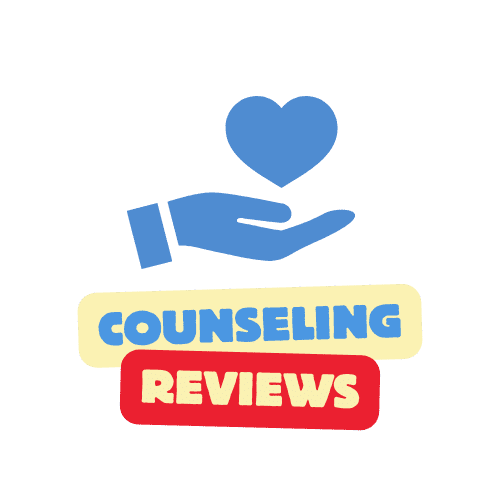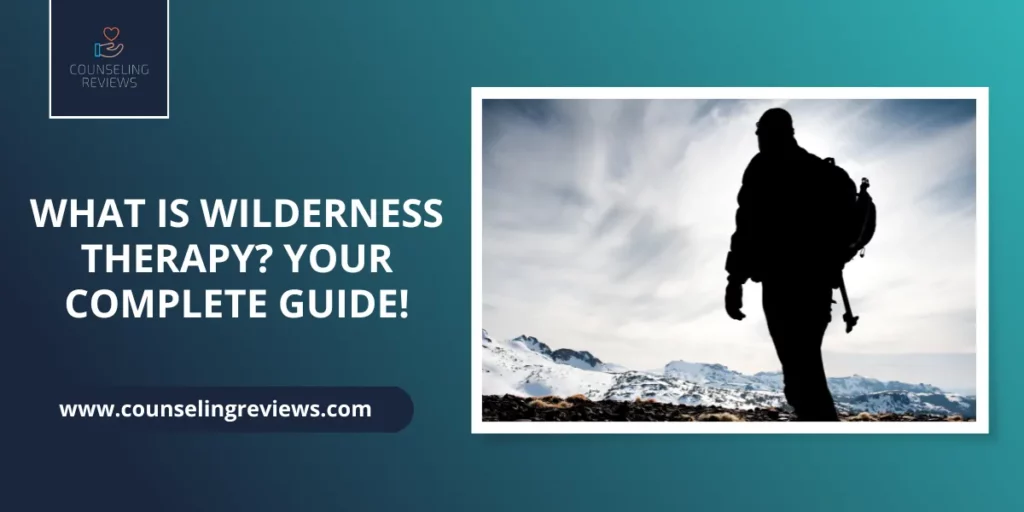Wilderness therapy can best be defined as a residential treatment program, primarily serving troubled adolescents, focusing on outdoor physical activities, survival skills, and therapy, as a means to improve behavior.
Wilderness therapy dates back to 1961 when a German educator named Kurt Han founded Outward Bound, one of the first youth wilderness and adventure therapy programs (James, 2016).
Wilderness therapy is often considered controversial due to several investigative reports revealing abuse of participants and, in some cases, even death.
Due to the lack of independent research, the variety of programs, and a lack of oversight, it is difficult to gauge the effectiveness and safety of these programs.
In this article, we will explore wilderness therapy for young adults, its benefits, its risks, and how you can find support if you are considering wilderness therapy for your child.
Different Types of Wilderness Therapy Programs
It is important to note there is a wide variety of wilderness therapy programs. From nomadic programs, where kids are required to sleep outside and live off of the land, to programs with indoor facilities in which kids sleep and bathe indoors, but spend most of their time outdoors.
Between these two ends of the spectrum lie a host of programs incorporating aspects of each.
Currently, many wilderness therapy programs take place in the Western United States, though they can be found throughout the U.S., Canada, and abroad.
Most programs are in-treatment programs, meaning participants stay on-site for the duration of their treatment. Some programs are co-ed while others are single-gender.
Though some participants voluntarily attend these programs, the majority of kids are placed here without their consent. Whether their parents are choosing this form of treatment or they are placed here through the juvenile justice system, most participants do not initiate treatment willingly.
It is common practice for many of these programs, with consent from the teens’ guardians, to forcibly remove adolescents from their homes in the middle of the night. In this way, teens can’t plan to run away or negotiate alternatives with their caregivers.
According to the U.S. Government Accountability Office, “while states often regulate publicly funded programs, several states do not license or otherwise regulate private programs.”
Most of the publicly funded wilderness therapy programs lost funding during the 2008 recession and subsequently closed. Therefore, the majority of wilderness therapy programs are privately funded and consequently lack oversight and regulation.
Who Does Wilderness Therapy Serve
Wilderness therapy is a therapeutic program primarily intended to serve at-risk teens and troubled youth generally ages 13-17. There are also programs aimed at serving younger adults (18-21) and families.
Treatment can last from several weeks to several months and is typically followed by boarding school or a residential treatment facility. Wilderness therapy is often only the beginning of a long-term treatment strategy and is considered triage by the counseling community.
Oftentimes, caregivers choose this form of wilderness therapy industry as a last resort. Perhaps their child has been in and out of substance abuse treatment programs or has had countless encounters with the law.
Wilderness therapy typically serves as a last attempt to curb challenging behavior.
Teen consulting

Other times, teens may be sent to wilderness therapy in an attempt to treat negative ADHD behavior, depression, panic attacks, extreme disobedience, eating disorders, and/or substance abuse issues.
Some facilities do not require a diagnosis or a psychological evaluation and accordingly, teens can be placed in treatment by their guardians without discretion.
Benefits of Wilderness Therapy
Other than anecdotal reports, limited data is signifying effective treatment results. One research report indicates improved behavior and mood both during treatment and afterward. (Behrens, 2010)
This study however did not have a control group and included self-reports from participants. It was not clear if participants filled these forms out during their treatment (which may have involved duress) or upon release from the treatment program.
Some former participants have stated they felt their treatment experience was invaluable. Some parents have even stated their belief that wilderness therapy may have saved their children’s life.
Patrick Burns, a participant in an Oregon-based wilderness therapy program in 1994 states: “My own wilderness adventure therapy experience, I will confess, was not easy and my progress was not always linear.
That said, I take pride in my participation in the self-discovery process and the skills acquired by ‘living primitively’.
More importantly, I left with a much greater understanding of who I was, how I connected with my family members, where I fit into the world, and how, when, and with whom I could discuss my feelings.”
Intended benefits include developing an appreciation for the outdoors, self-reliance, improved self-esteem, healthier coping mechanisms, peer engagement, respect for authority, cooperation, trust, and more.
Schooling is also provided and some kids may benefit from smaller learning groups and more individualized attention. Individual therapy and group therapy are also core tenets of most wilderness treatment programs.
Disadvantages of Wilderness Therapy
With the lack of oversight of privately run programs, safety remains a primary concern.
The three most recent deaths on record from wilderness therapy programs include: Eric Harvey, age 15, who died of heatstroke on 5/27/2002; Ian August, age 14, who died of hyperthermia on a hike in July of 2002; and Charles Moody, age 17, who died of asphyxiation after being restrained on 10/14/2002.
Teen consulting
Dating back to the 1970’s deaths include suicide attempts, asphyxiation from restraint holds, drowning, hyperthermia, hypothermia, an untreated ulcer, untreated infections, suffocation, cardiac arrest, dehydration, and a skull fracture from restraint. (Sutton, 2007)
Another disadvantage of most programs is the cost required to attend. Some programs charge $500/day, with one program charging $50,000 for three months of treatment.
Without more scientific data regarding the effectiveness of these programs, insurance companies typically will not cover the cost of treatment, leaving guardians with a hefty bill.
Though many programs provide licensed therapists, reports have mentioned counselors who are not trained or licensed in psychology, performing therapy-like sessions with participants. This is unethical and can lead to a lot of mental health complications.
Former participants have reported feeling traumatized by their wilderness therapy programs and subsequently developed various mental health disorders such as post-traumatic stress disorder, depression, anxiety, substance abuse issues, and eating disorders.
Overview
More research is required to determine if wilderness therapy programs are as effective as they claim themselves to be. In particular, it can be difficult to separate the benefits of receiving therapy in a wilderness treatment program, from the effectiveness of the wilderness treatment plan itself.
In other words, could a troubled teen benefit from outpatient therapy at regular intervals and reap the same positive rewards? Is it the wilderness therapy that is effective, or is it the therapy sessions and the length of treatment?
Without control groups and randomly selected subjects, these variables are difficult to decipher.
Estimates indicate the “troubled teen industry” makes upwards of 50 billion dollars annually. (Hilton, 2021) The “troubled teen industry” includes boot camps, therapeutic boarding school, schools, residential treatment programs, and wilderness therapy.
As with most lucrative industries, it can be difficult for consumers to understand the businesses’ intentions, safety protocols, proper training, and who governs oversight.
Though some former participants and their parents claim to have reaped positive rewards from such programs, it appears the outcome of these programs might have more to do with luck than skillful treatment.
The number of complaints and negative consequences reported is difficult to ignore.
Support
If you are considering wilderness therapy, here are some suggested questions to consider for your research.
- Is the program licensed by the state’s Department of human services?
- Is the program accredited (evaluated by an objective third party)?
- Does the program employ licensed therapists?
- What are the safety credentials of the counselors (CPR, First Aid)?
- Will you be allowed communication with your child?
- How are complaints of mistreatment handled?
- How are medical emergencies handled?
- Request references of former participants and their parents.
If after consideration you have determined wilderness therapy programs are not a good fit for you, there are several other options for getting your child help.
For one, individual and group therapy by licensed practitioners are well-researched and effective forms of treatment. There are even some residential treatment programs, that offer daily outpatient group therapy sessions for those clients needing more intervention.
In addition to therapy, you can also include adjunct treatment. For instance, there is a non-profit organization in Santa Barbara, CA, called the Wilderness Youth Project, whose mission is to teach youth about nature, and how to care for the environment.
To instill the belief that nature nurtures mental health and well-being. They offer summer programs, after-school programs, nature therapy, and more.
Animal therapy may be another great adjunct. There has been a lot of promising research on the benefits of equestrian therapy, which also endorses the advantages of being outside in nature, with animals, to improve mental health.
Online therapy is also available. Some online therapy services even provide options for clients to contact their therapist via message as often as they would like. This may be another adjunct to treatment and serve either the teen or the parent in nurturing them through the therapeutic process.
Importance of Social and Emotional Learning in Wilderness Therapy
Social and Emotional Learning (SEL) encompasses a set of skills and competencies that enable individuals to understand and manage their emotions, strengthen relationships, and make responsible decisions.
Emotional Regulation: Wilderness therapy provides a unique environment where individuals can experience and confront their emotions in a natural wilderness setting together.
Through guided outdoor activities and therapeutic interventions, participants learn to identify and regulate their emotions effectively. This process helps them develop coping strategies, reduce impulsive behavior, and improve emotional well-being.
Relationship Building: The group dynamics and peer interactions in wilderness therapy motivates them to develop healthy relationships. Participants collaborate, communicate, and problem-solve together, building trust and empathy.
These experiences promote effective teamwork, conflict resolution, and interpersonal skills, which are crucial for forming and maintaining positive relationships in all aspects of life.
Personal Growth and Resilience: Wilderness therapy challenges individuals to step out of their comfort zones and confront personal obstacles. Participants engage in physical activities, overcome obstacles, and face adversity, which enhances their self-confidence and resilience.
They learn to set goals, persevere through difficulties, and adapt to new situations, fostering personal growth and a sense of accomplishment.

Three Key Strengths of Wilderness Therapy
Assessment:
The initial step in the treatment process involves a thorough assessment of the issues faced by the individual. Families often lack comprehensive understanding beyond the obvious signs of anger, anxiety, or depression. They may question professional diagnoses and the effectiveness of medications.
Concerns about sending their child away and its impact on strained relationships also arise. A Wilderness program, with groups of students facing similar challenges, creates an environment conducive to self-assessment, offering a platform for adolescents to open up.
Development of Coping Strategies:
Wilderness therapy programs maintain constant observation of participants and provide in-the-moment therapy.
Professionals assess how young people handle their experiences and intervene as needed. Through real-time discussions, students learn to develop strategies for effective self-soothing and moving forward. They become more self-reliant while also seeking support from peers and adults.
Identity/Self-esteem:
Wilderness experience programs have been shown to help build success-oriented identities by improving self-concept, hope, internal locus of control, self-confidence, interpersonal relationships, and social skills. Participants gain a deeper understanding of themselves, their family dynamics, and their place in the world, and find safe spaces to discuss their feelings.
Conclusion
Whatever you decide, know that help and support from mental health professionals are available. Consider a couple of different opinions during your process of evaluation. It would be helpful to seek counseling as a family to formulate a holistic treatment plan for all involved.
It is worth noting, most consultants do receive a commission from some of these therapeutic wilderness programs and therefore, may not be the most objective advisers.
Talk to a variety of experts for guidance including the school psychologist, your pediatrician, and your local non-profit at-risk teen resource. Though you may feel time is of the essence, and you may feel pressured to make a decision, take as much time as you can to make the best decision for you and your child.
Wilderness Therapy FAQs
Some typical methods used to perform wilderness therapy include hiking, wilderness camp, rock climbing and canoeing. They offer individuals a chance to challenge themselves to develop a sense of self esteem.
RedCliff’s young adult program aims to improve the mental health of adolescents in need of therapy. The teen can be removed from situations that cause negative behavior. Teens engage in difficult therapeutic experiences that disrupt undesirable behaviors. They can discover who they are. There is no one on Facebook. They’re present. Nursing professionals will guide you through the process. Therapists are trained to help teenagers and adults strengthen their family bonds.
These programs provide a crucial break from daily life, and might sometimes appear to be boredom therapy. There are no escape routes in the wilderness. It is not possible to conceal in a home computer game. The students are emotionally safe. It was not by chance. They live a healthy lifestyle and exercise on a daily basis.




